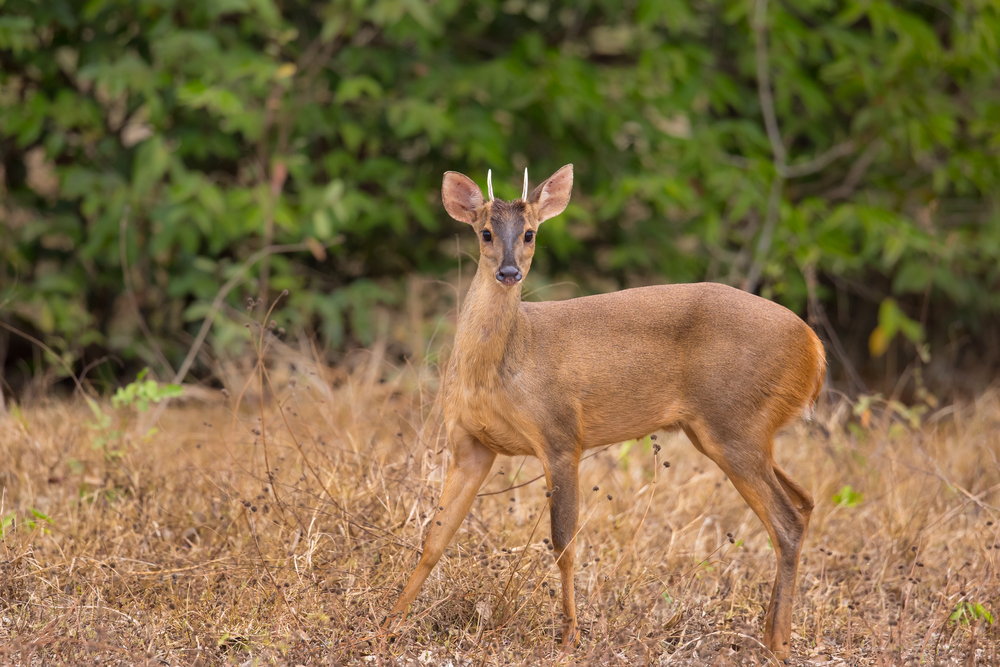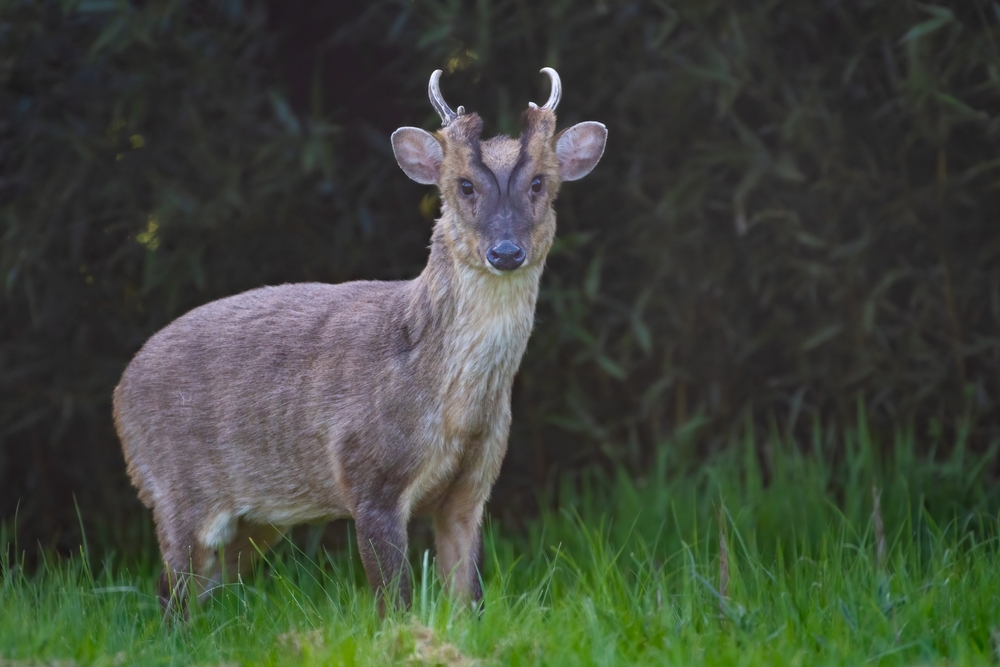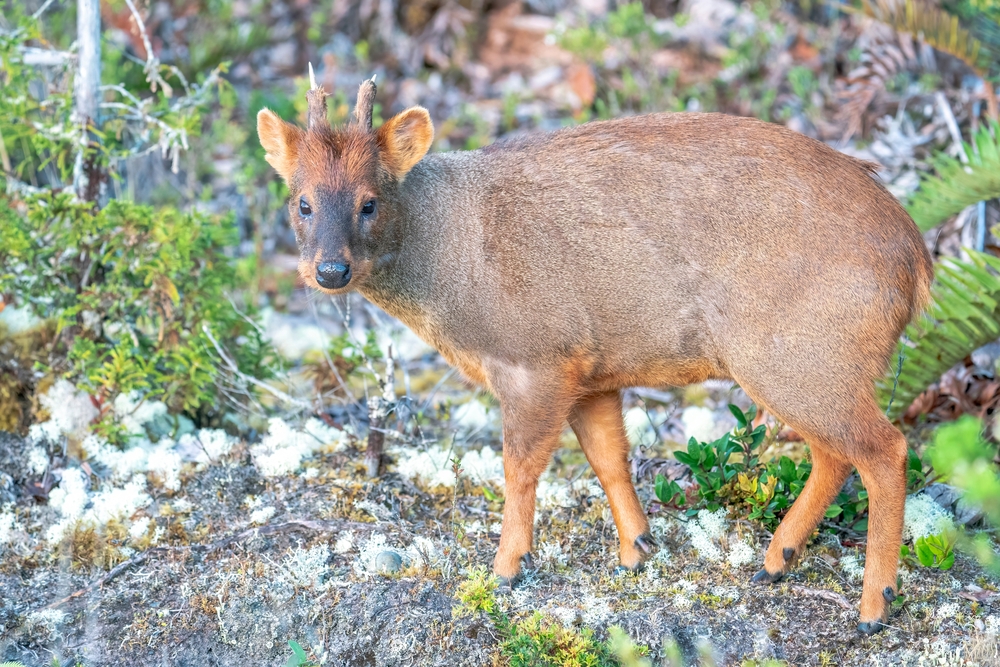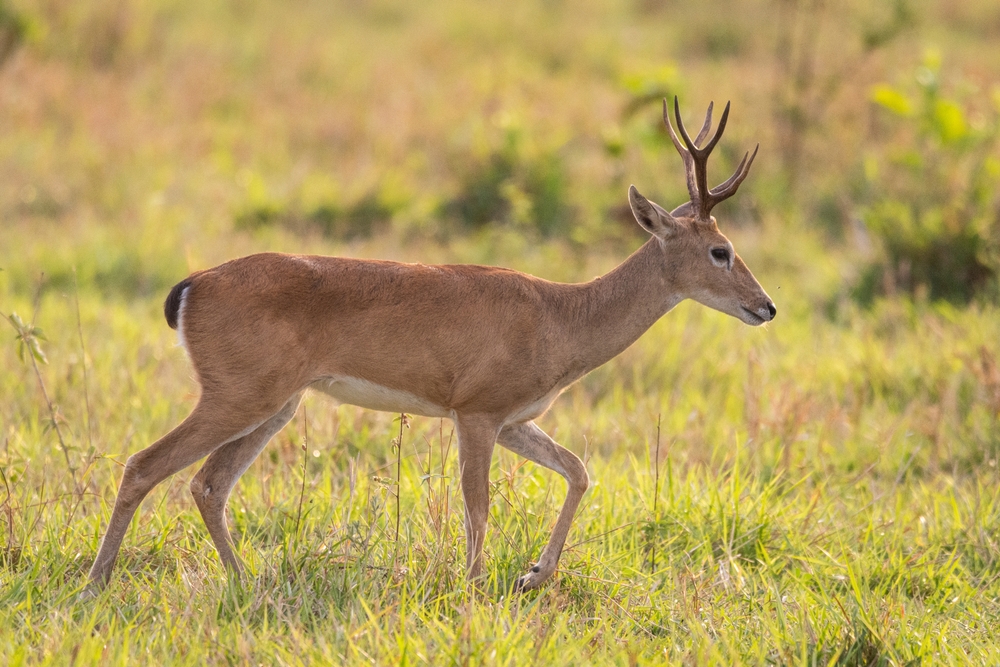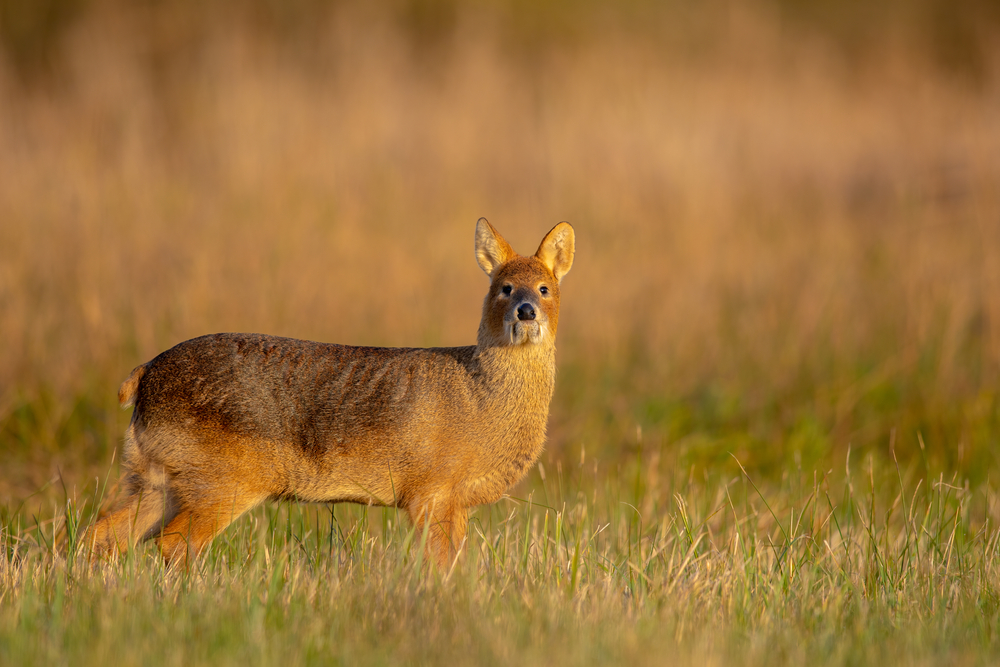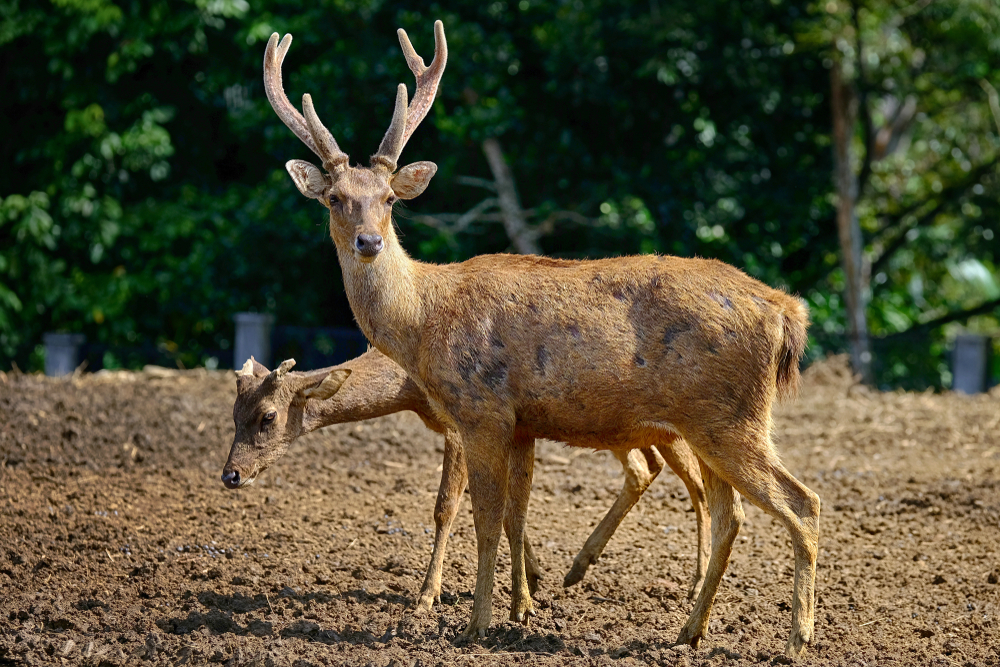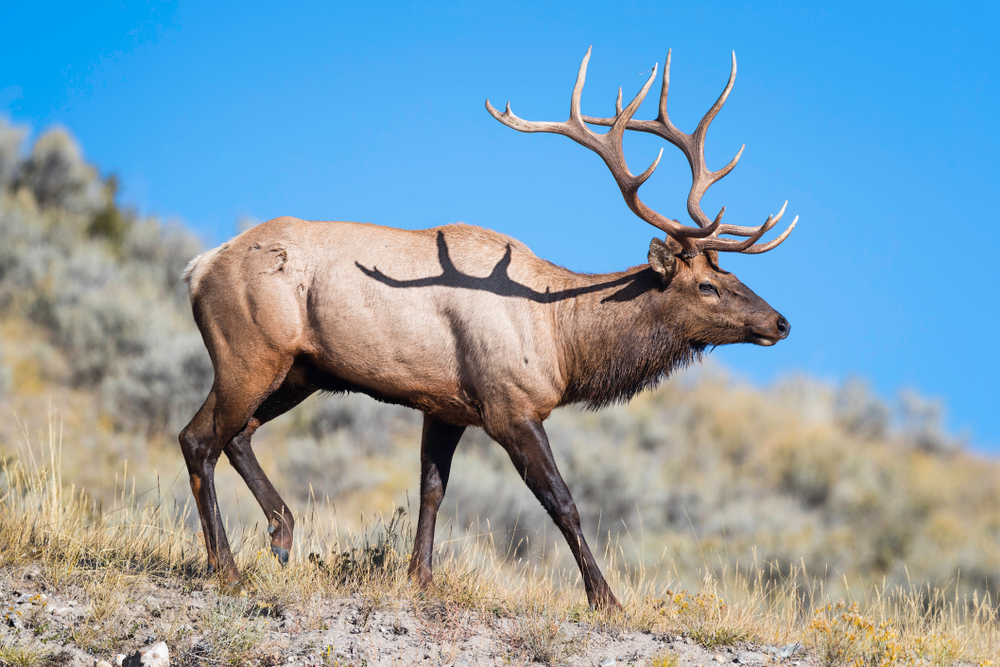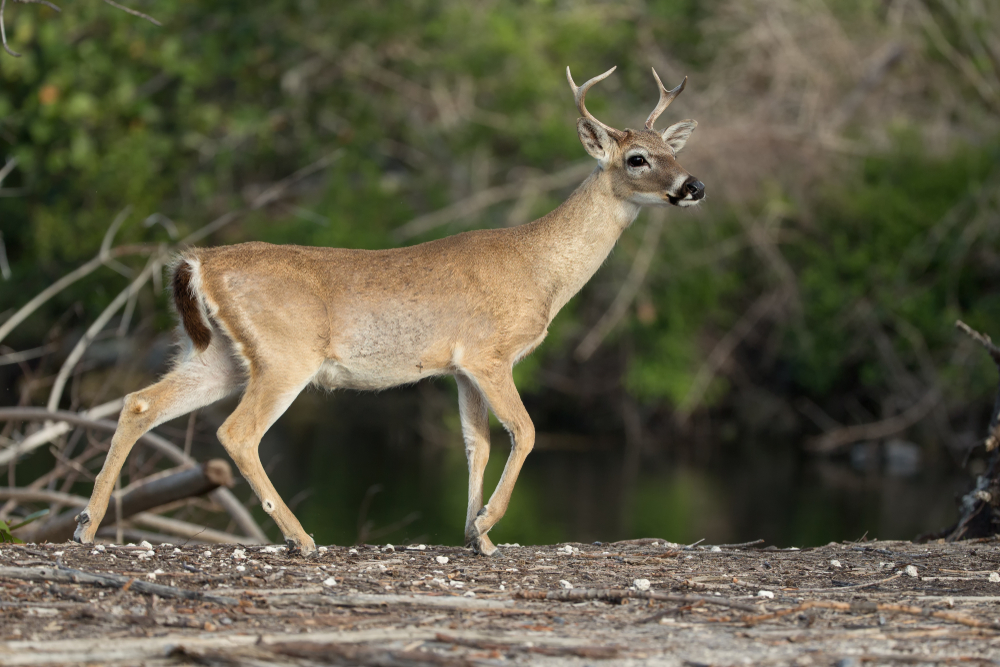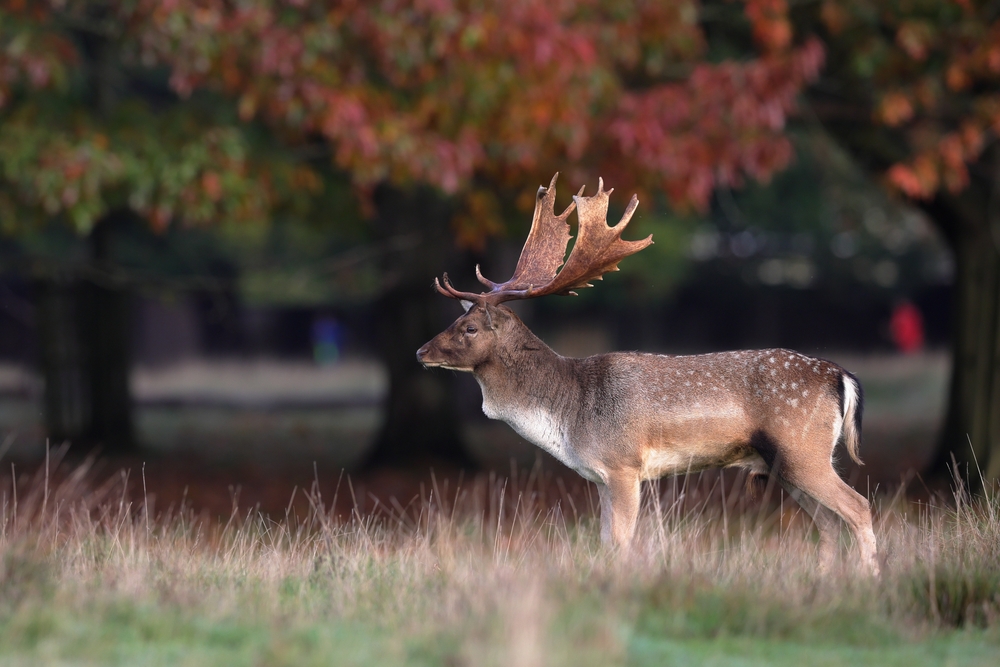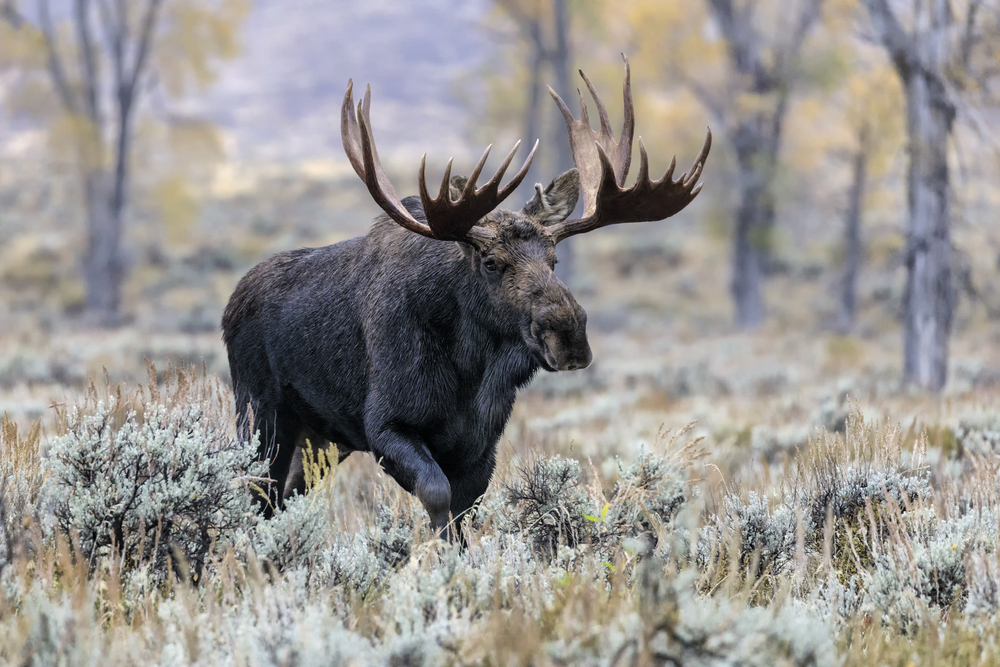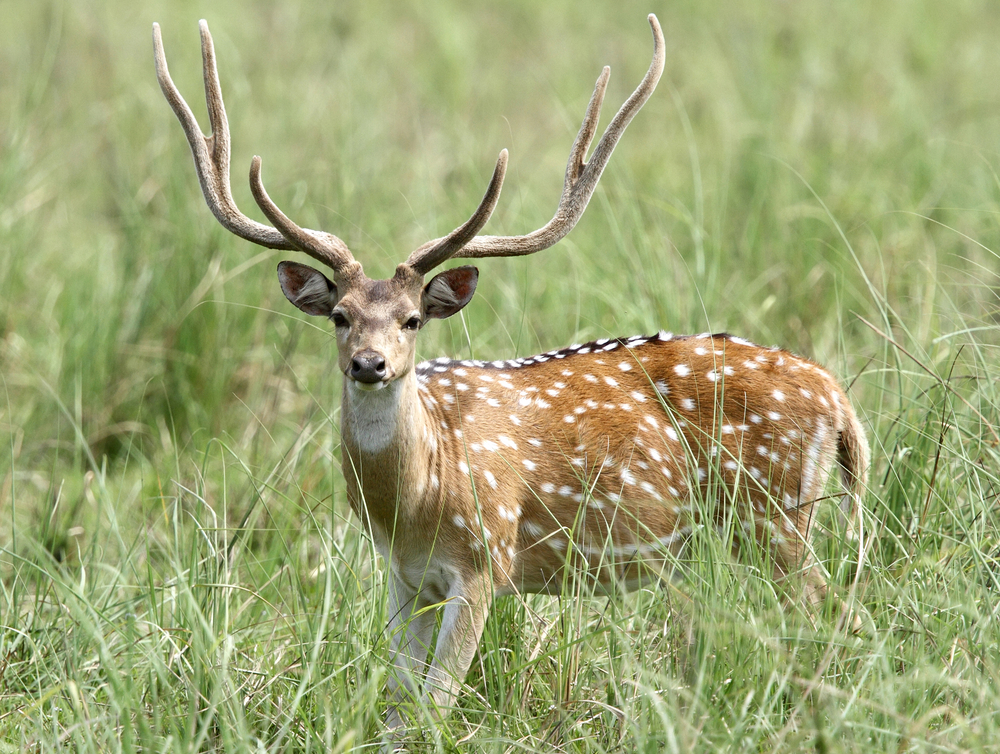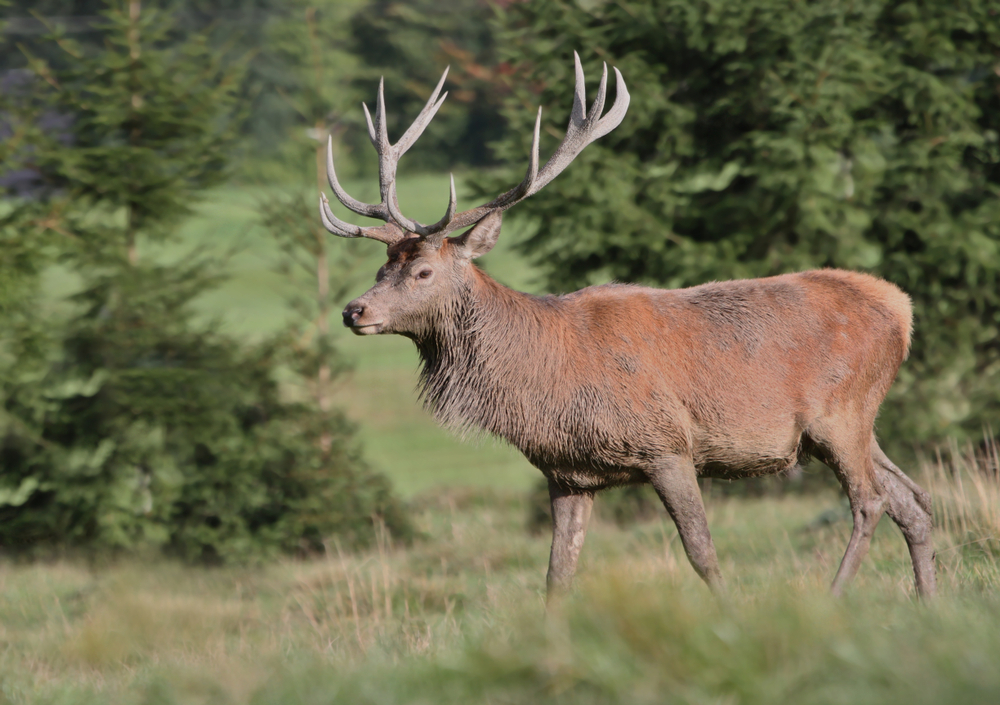Physical Characteristics
The Red Brocket is a shy, forest-dwelling deer native to Central and South America. As one of the largest members of the Mazama genus, it is built for life in dense tropical forests, with cryptic coloration and solitary habits. Below is a structured overview in the style of the AK Physical Characteristics document:
Coat:
Red Brocket Deer have a dense, coarse coat that ranges in color from reddish-brown to rusty chestnut, depending on age, region, and season.
-
Underparts, including the belly and inside of the legs, are lighter or grayish.
-
In some populations, the neck and face may appear darker, especially in males.
-
Their coloration blends seamlessly with leaf litter and low forest light.
Face:
The face is short and thick, with a broad, blunt muzzle and dark nose.
-
Ears are large, oval, and mobile, with pale fur on the inner side.
-
Males often have a dark forehead patch and visible scent glands near the eyes.
Antlers:
Only males grow antlers, which are short, spike-like, and usually unbranched or slightly forked.
-
Antlers are positioned close together on the forehead.
-
Typically measure 3 to 6 inches (8 to 15 cm) in length.
-
Shed annually and regrown.
Body:
The Red Brocket has a stocky, muscular build, with a compact torso and relatively short legs.
Tail:
They have a short, bushy tail, dark on top with a white underside.
Size:
Weight:
The Red Brocket’s dense reddish coat, spiked antlers, and compact form are perfectly suited for navigating thick forest undergrowth. Its physical design reflects its secretive lifestyle—relying on camouflage, stillness, and quick bursts of movement to evade predators in Central and South America’s tropical forests.



































































